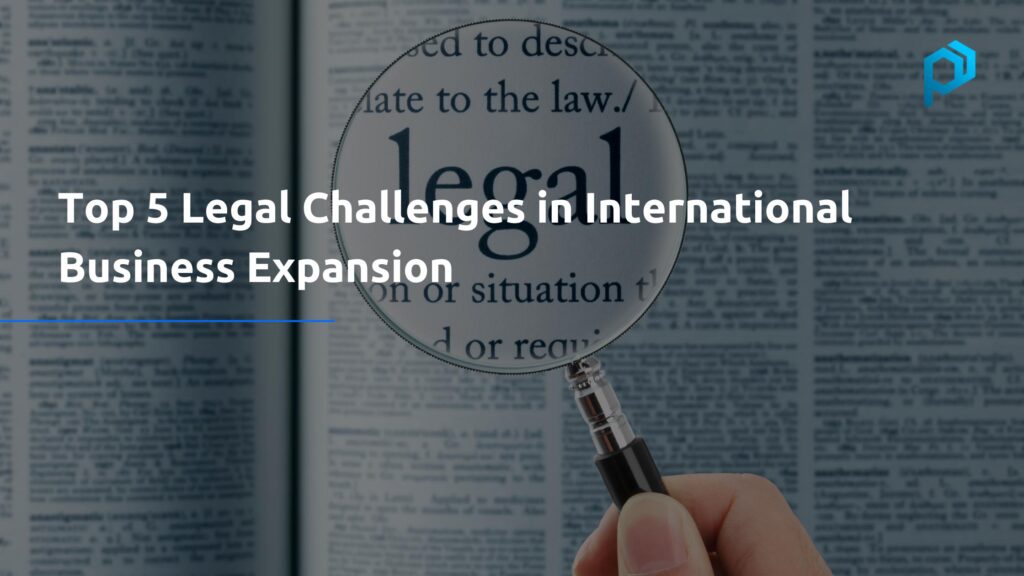Top 5 Legal Challenges In International Business Expansion
Global expansion is a tempting prospect for many businesses, offering access to new markets, diversified revenue streams, and the opportunity to attract top talent from around the world. In fact, global e-commerce sales have hit nearly $5.8 trillion, underscoring the immense potential for growth. But expanding internationally isn’t just about seizing new opportunities it’s also about overcoming significant legal hurdles.
Research shows, 70% of companies encounter regulatory or compliance issues when entering new markets, and successfully managing these complexities is key to smooth business process management abroad. In this guide, we’ll dive into the legal challenges of international business expansion and explore how to navigate them.
Cross-Border Regulations and Compliance
One of the most challenging aspects of expanding a business internationally is complying with the diverse regulations and standards that differ from country to country. Every nation has its own set of laws and requirements that businesses must follow. A strategy effective in one nation might be illegal or frowned upon in another. Especially with the rise of business automation, data transfer, and privacy laws have become more stringent. For businesses employing an international remote team, ensuring data protection and compliance becomes paramount.
Intellectual Property Protection
As you expand globally, safeguarding your intellectual property (IP) becomes critical. Since every country operates under different IP laws some less protective than others it’s vital for businesses to understand these legal distinctions and properly register their assets. In the pursuit of international growth, protecting your IP is a must.
In today’s digital era, where business automation is booming, the risk of intellectual property (IP) breaches has skyrocketed. These infringements can happen in the blink of an eye, often slipping through overlooked areas. That’s why, as businesses go global, a robust, region-specific IP protection strategy is no longer optional it’s essential.
Contractual Agreements and Dispute Resolution
Entering into contractual agreements is a significant part of international business expansion. Navigating different legal systems can quickly complicate global expansion. Which country’s jurisdiction will govern your contracts? How will disputes be resolved? To protect their interests, companies must be well-versed in the local laws that impact international business. Mastering these legal nuances can be the deciding factor between a smooth expansion and an expensive legal battle.
Employment and Labor Laws
Building an international remote team is an exciting venture. Yet, it’s essential to be aware of the employment and labor laws of the respective country. From hiring practices to compensation and termination rules, everything varies. With the ongoing talent shortage in many industries, companies are looking to tap into global markets to attract top talent. However, it’s crucial to ensure that their hiring and management practices don’t flout any local laws.
Foreign Investment Regulations
Lastly, countries have distinct regulations when it comes to foreign investments. Some nations may welcome foreign investments with open arms, offering incentives and tax breaks. In contrast, others may impose stringent restrictions to protect local businesses.
According to the United Nations Conference on Trade and Development (UNCTAD), global foreign direct investment (FDI) flows reached $1.58 trillion, but navigating regulatory landscapes remains complex. Being aware of top legal issues in international business like these can make the path smoother for enterprises looking to expand their operations abroad.
Conclusion
International business expansion holds tremendous promise, offering companies the chance to diversify and scale. But with this opportunity comes a host of legal challenges. From cross-border regulations and intellectual property protection to navigating complex employment laws, businesses must approach global growth with caution. By staying informed and proactive, companies can tackle these legal hurdles and unlock the full potential of international markets.
Top 5 Legal Challenges In International Business Expansion Read More »



